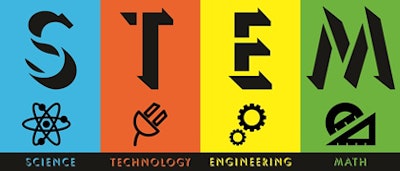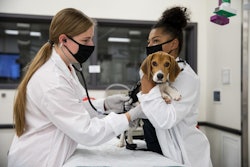
Also, a separate report released Monday by American College Testing (ACT) shows that, even though underserved students aspire to STEM fields at the same rate as the overall population, they generally lag behind the rest of the population when it comes to college readiness in math in science.
Taken together, both reports add to the growing amount of research that has found America’s efforts to get more students from low-income backgrounds and minority groups motivated and prepared to work in STEM fields are coming up short.
Brian Kelly, editor and chief content officer of US News & World Report, which produced the US News/Raytheon STEM Index, said the gaps stem from a variety of factors. They include a lack of awareness among parents on the importance of STEM fields—which continue to constitute the fastest areas of job growth—and an inability to bring to scale STEM education programs that work.
“I think a lot of the education system can be blamed in many ways as a culprit here, too, because the way we teach these subjects is not as engaging as it needs to be,” Kelly said. “A lot of evidence says you need to teach math and science in a more hands-on practical way so kids understand ‘Why am I solving this problem,’ or ‘I’m doing this experiment because it’s about real life,’ and the education system is more focused on the abstractions.”
The STEM Index published Monday by US News examines STEM activity by a variety of indicators that range from employment to degrees granted to Advanced Placement tests taken in STEM fields.
The index turned up troubling gaps in several areas. For instance, the index found that:
• From 2009 to 2014, the percentage of bachelor’s degrees granted to White students in STEM grew from 16.8 percent to 19.5 percent, rising every year. During the same timeframe, however, the percentage of bachelor’s degrees granted to Black students in STEM grew at a slower pace, from 12.7 percent in 2009 to 13.6 percent in 2014.
• From 2000 through 2014, women at the college and graduate levels earned more STEM degrees each year, but they only kept pace—as opposed to catching up—with their male counterparts. To wit, only 6 percent of associate degrees and 13 percent of bachelor’s degrees granted to females were in a STEM field. In comparison, 20 percent of associate degrees and 28 percent of bachelor’s degrees granted to males were in STEM fields. At the graduate level, the figures were 10 percent for females and 24 percent for males.
• The gender gap in engineering and technology fields is “well-formed” by high school, with just 3 percent of high school females in 2014 indicating an interest in engineering, compared to 31 percent of males. In the same year, just 2 percent of girls reported an interest in technology, while 15 percent of boys did.
The gaps are troubling because they portend lack of access to employment in STEM fields, which has shown the most growth over the past decade or so.
“Overall, STEM increased 20 percent since 2000, the largest increase of all the sub-indices,” the index states.
The STEM jobs in demand range from petroleum engineers since “fracking” and horizontal drilling have led to the opening of more than one million new oil and gas wells, to computer-related jobs that range from programmers to systems analysts and administrators.
“Clearly, we need to do more to make diversity a priority in science, technology, engineering and math fields to keep the United States competitive and the economy growing,” said Mark E. Russell, vice president of engineering, technology and mission assurance for Raytheon Company.
As for the ACT report—titled “Understanding the Underserved Learner: The Condition of STEM 2014”—the report found that, even though underserved students had an interest in STEM at the same level as the overall population—nearly one out of two—they are far less likely to be adequately prepared for first-year college STEM courses.
For instance, the report found that just 31 percent of underserved, STEM-interested students “met or surpassed the benchmark on the ACT math test, while only 25 percent achieved the benchmark on the science test.” Those figures compare to 43 percent and 37 percent of all 2014 ACT-tested graduates, respectively, ACT states.
“Underserved students have the same STEM aspirations as others, so it’s sad to see their achievement levels so far behind,” said Jon Erickson, ACT president. “This research provides an important reminder of why it’s so important to help improve educational outcomes for students who don’t have the same access to quality resources as others.”
Jamaal Abdul-Alim can be reached at [email protected]. Or follow him on Twitter @dcwriter360.


















